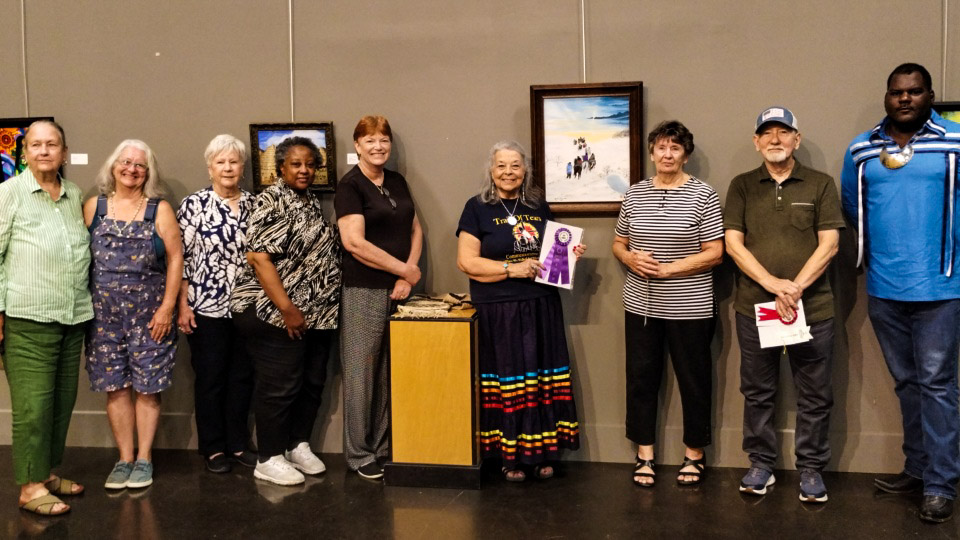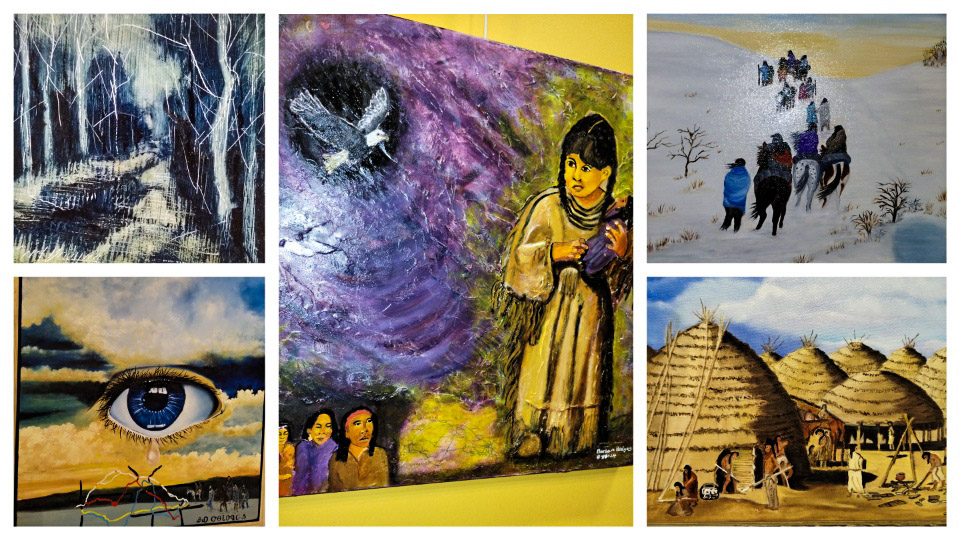
WOODBURY, Tennessee — For the second year in a row, the “Trail of Tears” art show was held in this Tennessee city a few miles from the bustling municipality of Murfreesboro, 30 miles south of Nashville. The show opened on August 2 in the city art center.
The exhibition was organized by Melba Checote-Eads, a citizen of the Muscogee Creek Nation of Oklahoma and longtime Woodbury resident, and Gary White, a Muscogee Creek and Cherokee descendant.
The art show was first held in 2023 and was to commemorate the genocidal Trail of Tears of 1838 trod by Cherokees and Muscogee Creeks on forced marches to what is now the state of Oklahoma.

To be eligible for entry, the artworks, both paintings and ceramics, were required to depict historic Southeastern Indigenous culture prior to and contemporaneous with the heinous Trail of Tears.
The Trail of Tears was directed at all the five major Native nations of the Southeast – Cherokee, Muscogee Creek, Choctaw, Chickasaw, and Seminole – as part of the land grab policy of the U.S. government of tribal dispossession following in the wake of the Cherokee and Creek wars of the 18th and 19th centuries, respectively.
The art was produced primarily by senior citizens of Woodbury. What made it so doubly impressive was that most of the work was done by non-Natives, both African American and white, who in fact did prodigious research of Southeastern Native cultures before engaging themselves in producing the art.

This also produced an awareness, appreciation, and consciousness of the historic tragedies that beset Indigenous peoples in the past.
This writer was tremendously impressed by the talent and accuracy that went into the artwork and looks forward to the next art show in 2025.
Albert Bender is a Cherokee activist, historian, political columnist, and freelance reporter for Native and Non-Native publications. He is currently writing a legal treatise on Native American sovereignty and working on a book on the war crimes committed by the U.S. against the Maya people in the Guatemalan civil war He is a consulting attorney on Indigenous sovereignty, land restoration, and Indian Child Welfare Act (ICWA) issues and a former staff attorney with Legal Services of Eastern Oklahoma (LSEO) in Muskogee, Oklahoma.
This article originally appeared on People's World. It is published under a Creative Commons license.
Cronkite News: A ‘mural with a message’ rises in Arizona
Chuck Hoskin: Cherokee Nation is an economic powerhouse
Native America Calling: Philanthropy fills in the gaps
AUDIO: Examining 50 years of the Indian Self-Determination and Education Assistance Act in Indian Country
Native America Calling: The next 50 years of self-governance
Cronkite News: Food sovereignty movement promotes Native foods
VIDEO: Examining 50 years of the Indian Self-Determination and Education Assistance Act in Indian Country
Native America Calling: Fresh Native creativity with a new play and new television show
AUDIO: Native American Education – Examining Federal Programs at the U.S. Department of Education
VIDEO: Native American Education – Examining Federal Programs at the U.S. Department of Education
Native America Calling: Indigenous business and the unpredictable new trade landscape
Written testimony for Senate Committee on Indian Affairs hearing on Department of Education
Native America Calling: An imbalance of deadly force by police in Canada
‘Betrayal’: Indian Country slams closure of Department of Education
More Headlines